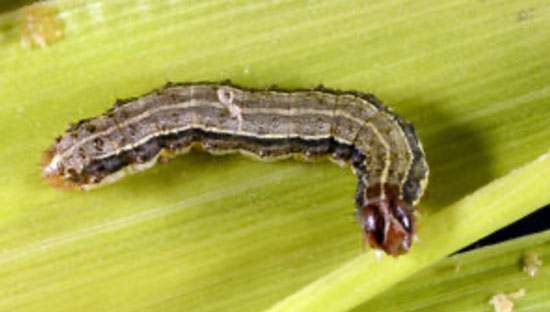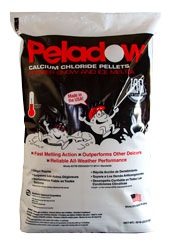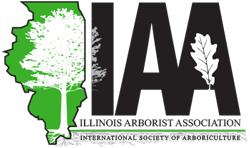October 2021 News
FALL ARMYWORMS: WHAT NEXT?
By: Doug Richmond

A fall armyworm caterpillar with characteristic stripes and inverted, light-colored Y-shape on the head (John Obermeyer Photo).
The entire Midwest just experienced one the worst fall armyworm outbreaks in decades, but for turfgrass professionals and enthusiasts, it’s not over yet. These seasonal, but sporadic insects made their appearance at the end of August, decimating lawns and other managed turfgrass. But, now that the damage is done, our focus shifts from crisis to recovery, with an eye open to the next generation.
Fall armyworms, as their name implies, usually show up in the late summer and fall in this part of the country. These insects remain in subtropical climates for most of the year, but hurricanes and tropical storms that sweep northward during hurricane season can carry enormous numbers of adults into the interior of the continent, sometimes raining fall armyworms over the entire Midwest and Northeast. Once they fall out of the sky, those adult lay eggs in masses on vertical objects including the sides of structures and even the flags marking golf holes. When enough egg masses are laid near one another, the resulting larvae can be so numerous that they eventually overwhelm surrounding turf, chewing it to the ground. The larvae that consumed your turf over the last few weeks have now pupated and are beginning to emerge as adults, so our efforts should shift accordingly.

A stand of turfgrass damaged by fall armyworm larvae at the end of August in West Lafayette, IN (Jim Scott Photo).
Giving turfgrass the best opportunity to recover should be the top priority. While soil temperatures remain high, disturbing plant crowns should be avoided, so raking out dead material, core cultivating and slit seeding should be put on hold if possible. Instead, consider irrigating the turf if the soil is dry. Irrigation can help reduce soil temperatures and stimulate plant re-growth. If the turf is not fertilized, a very light fertilization (<0.5 lbs. of N per 1000 ft2) may be in order, but keep in mind that well-maintained turf will generally not require additional nitrogen. If the turf isn’t growing, don’t mow it. In other words, do everything you can to protect the plant crowns as these will produce the new tillers and leaves that mark recovery.
Keep an eye out for the next generation of fall armyworm larvae. Almost all of the previous larvae have pupated and a few adults have begun to emerge. The adults resulting from the previous larval generation will soon busy themselves mating and laying eggs that will produce another, potentially destructive, larval generation. It’s still early in September and there is likely plenty of warm weather left this season to move larval development along. However, the next generation is not likely to reinfest the same stands of turf. Adults will disperse and find “greener pastures” that are more suitable for their offspring. That means scouting for egg clusters and soap flushing for larvae are the best ways to identify potential infestations before they cause serious damage. If we get lucky, temperatures will moderate and put the brakes on fall armyworm development, but I wouldn’t bet on it. The last half of September and first half of October could be interesting.
Fall armyworms are easy to manage and there are a number of insecticide active ingredients that will keep them in check (Table 1). Liquid applications are almost always preferable to granules since liquids provide better coverage and work more quickly. Granules also require rainfall or irrigation to release the active ingredient. Mowing just prior to application can increase penetration of the insecticide through the canopy and into the spaces where fall armyworms are active and feeding.
| Insecticide Active Ingredient |
Insecticide Class |
| Bifenthrin |
Pyrethroid |
| Carbaryl |
Carbamate |
| Lambda-cyhalothrin |
Pyrethroid |
Insecticide active ingredients registered for use against fall armyworms in turfgrass.
That’s it 3/4 focus on turfgrass recovery and regrowth, and be alert to egg masses and developing larval infestations. If another generation of fall armyworms unfolds, its potential impact on turfgrass winter-hardiness and spring green-up could be a significant concern.
Roots Fertilizer for Trees 11-22-22 SRN

Roots Fertilizer for Trees is a water-dispersible chemical and biological fertility product. Key elements are micronized so that Roots Fertilizer for Trees will not clog equipment. A new surfactant technology (RZ-3) helps the product to readily penetrate the soil. The chemically based elements meet trees' nutrient needs immediately, while the beneficial microbes sustain fertility over the long term.
GET YOUR EARLY ORDERS IN
Bagged De-Icing Products
 Item #445014 Item #445014
PELADOW™ Calcium Chloride Pellets
The Hottest Stuff Around
- Effective down to -25°
- White color, no residue
- Generates heat
- Round pellets for even coverage
- Helps make sidewalks safer
Avoid over application
Volume: 50lb bag, 55 bags/pallet
 Item #181580 Item #181580
NATIONAL Ice Melt
- Contains RUSH speed enhancing additive.
- Dyed blue for ease of application.
- Effective down to -15°
Volume: 50lb bag, 49 bags/pallet
MARK YOUR CALENDAR
 ILCA’s ANNUAL PARTY AND MEMBER MEETING REGISTER NOW – ILCA’s ANNUAL PARTY AND MEMBER MEETING REGISTER NOW –
NOVEMBER 11, 2021
Join us for a fun evening of networking, recognizing achievements, food, and BEER!
Join the Illinois Landscape Contractors Association and the membership committee for the 2021 Annual Party & Member Meeting!
When: November 11, 2021, 5 - 8pm CDT
Where: Joe’s Live 5441 Park Pl, Rosemont, IL 60018 [map]
MORE INFORMATION
2021 Annual Conference, Trade Show & Job Fair In-Person & Virtual Event

November 9 & 10, 2021
Even Hotel Chicago & Tinley Park Convention Center [map]
EVENT DETAILS
Winter 2021
Snow Prep Guide
|
2021
Catalog
|
|